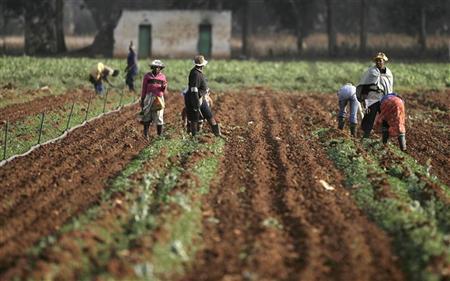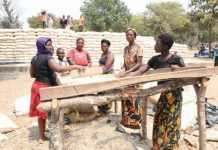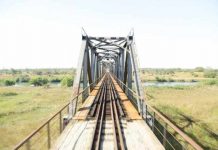Climate change, which has manifested itself in changing rainfall patterns and higher temperatures, is posing a threat to farming communities in Zambia, a landlocked country in southern Africa.
“In the past, we used to plant our crops after the first rains in late October and early November, ” Philip Mulendema, a farmer from Kalomo, a town in the country’s south, told Anadolu Agency.
“But the trend has changed of late,” he added. “Now the rains begin in December – or even in January.”
Places badly hit by climate change are Kalomo, Choma, Gwembe and Sinazongwe in Zambia’s Southern Province, where many families are reportedly starving.
The rural population along the Kafue sub-basin, which covers Zambia’s Southern, Lusaka and Central Provinces, remain the most vulnerable to regular floods and droughts.
“Temperatures nowadays are higher than before and this isn’t good for crop production,” Joseph K. Kanyanga, chief meteorologist at the Zambia Meteorological Department, told AA.
Ezekiel Phiri, a 76-year-old farmer in Kabwe, capital of Central Province, said most of his crops had been destroyed by heavy rainfall.
He lamented that there was only limited time to begin replanting.
“Even our animals have been affected by this climate change,” Phiri told AA.
Pamela Chisanga, Zambia Country Director for ActionAid, an international NGO, said the recent climatic changes had forced many farmers to switch to hybrid crops.
“Long-season local maize varieties are no longer preferred,” she told AA.
According to Chisanga, maize crops, traditionally grown in November, are now being grown in December – sometimes even in January.
She expressed worry that climate change was adversely affecting crop production.
“Drought and flooding is causing damage, not only to life but [is also causing] a drop in crop production,” she said.
Support
According to the Zambia National Farmers Union, erratic rainfall and shifting weather patterns are making it increasingly difficult for farmers to plan their harvests.
“This, paired with soil fertility loss due to flooding and expanding deserts, plus depletion of groundwater reserves due to prolonged droughts and wide proliferation on crops and livestock pests, will lead to drops in crop yields,” farmers union president Jervis Zimba told AA.
Chisanga, the Action-Aid activist, underlined the need to provide farmers with the necessary information and technological know-how to improve local farming techniques.
“For now, farmers in Zambia lack the necessary support and information to surmount the problem they’re facing,” she said.
“The government, for instance, must collaborate closely with research institutions to come up with drought-tolerant and fast-maturing crop seeds,” added Chisanga.
She went on to say that Zambian farmers “must be encouraged to diversify in order to keep pace with the changing climate and grow crops that suit their regions.”
To help farmers adapt to new weather patterns, she recommended stepped-up investment in irrigation and agriculture infrastructure.
Michael Zulu, a climate change specialist at Zambia’s Mwekera Agricultural Research Institute, underlined the importance of strengthening farmers’ capacities and making new crop varieties available to them.
“Change takes time,” Zulu said, “even when it comes to climate change.”

 JOIN DRIVERN TAXI AS PARTNER DRIVER TODAY!
JOIN DRIVERN TAXI AS PARTNER DRIVER TODAY!











